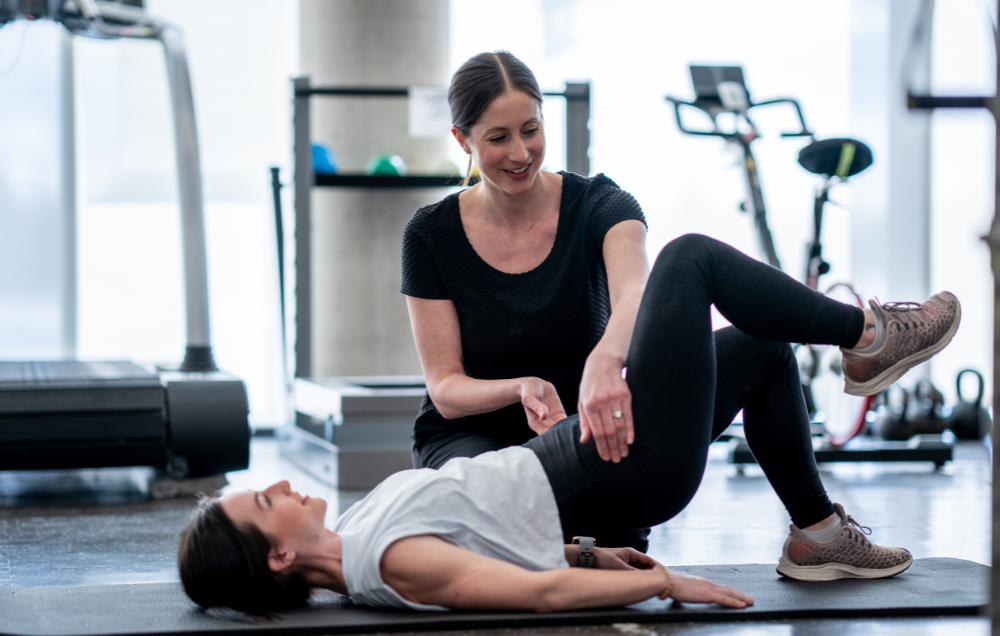Contents
The journey from surgery to recovery can involve more than just the operation. It can also require physical therapy to help ensure proper healing and recovery. Outpatient physical therapy can play a vital role in post-surgical recovery and provide you with many benefits.
Understanding outpatient physical therapy
Outpatient physical therapy is rehabilitation services that are provided in a clinical setting. Patients attend these sessions at a physical therapy clinic rather than being admitted to the hospital or a rehabilitation facility. This approach can allow individuals to receive specialized care and support from skilled physical therapists while continuing their recovery journey comfortably at home.
Benefits of outpatient physical therapy
Outpatient physical therapy can provide a multitude of benefits. It can be an integral part of your post-surgical recovery process. Benefits provided include:
- Personalized treatment plans — Physical therapists can assess your condition and then create an individualized treatment plan. This individualized treatment plan is tailored to your specific surgical procedure and can ensure targeted and effective rehabilitation.
- Improved mobility — Physical therapy focuses on helping to restore your mobility and flexibility. This restoration can help you regain movement in your affected body parts and help you regain independence in doing your daily activities.
- Pain management — Physical therapists use various techniques to help manage your pain. They incorporate exercises, manual therapy and other modalities to help alleviate discomfort and improve your overall quality of life.
- Muscle strengthening — Postoperative physical therapy can include progressive exercises. These exercises are designed to help strengthen weakened muscles. Strengthening weakened muscles helps to restore normal muscle function and helps prevent muscle atrophy.
- Improved balance and coordination — Physical therapists use exercises to help improve balance and coordination — which are essential if you are experiencing challenges in movement after surgery. These exercises can help improve stability and reduce your risk of falls.
- Prevention of complications — Physical therapy can help prevent post-surgical complications. These complications can include blood clots or joint contractures. Exercises, manual therapy and other modalities can be used to help encourage proper movement and improve circulation in affected areas.
Goals in post-surgery outpatient physical therapy
Your goals of postoperative physical therapy can vary based on the type of surgery you had and your individual needs. However, some common goals for post-surgery outpatient physical therapy can include:
- Restoring range of motion — Physical therapists can use gentle exercises and stretches that are intended to help restore your normal range of motion in joints affected by surgery. These exercises and stretches can help improve your flexibility and prevent stiffness.
- Restoring strength — To help rebuild muscle strength, progressive resistance exercises are used. These progressive exercises help you to regain your ability to do normal daily activities with less straining.
- Promoting healing — Therapeutic techniques can aid healing by helping to improve circulation, reduce inflammation and promote tissue repair in the surgical area.
- Boosting functional independence — Physical therapy focuses on helping you improve your ability to do daily tasks independently. Improved daily tasks can include walking, stair climbing, dressing and bathing. These tasks help ensure a higher quality of life.
- Educating patients — Your physical therapist can teach you about proper body mechanics, posture and exercises they can do at home. Learning these things can help you have an active participation in your recovery.
Surgeries that require postoperative outpatient physical therapy
There are several surgeries that often require postoperative physical therapy to help ensure optimal recovery and prevent complications. Common surgeries that can benefit from physical therapy include:
- Amputation surgery — Physical therapy can support patients in learning to adapt to their prosthetics. This can include improving their mobility and helping them gain independence in daily activities.
- Cardiac surgery — Cardiac surgeries like heart bypass surgery can benefit from the improved cardiovascular endurance physical therapy can provide. It can also help improve overall cardiovascular and physical health.
- Joint replacement surgery — Physical therapy can help restore joint mobility and muscle strength after joint replacement surgeries like knee, hip or shoulder replacements.
- Spinal surgery — Patients with spinal surgeries like a laminectomy, discectomy or fusion can see pain relief from physical therapy treatments. Physical therapy can also help improve posture and restore spinal function.
- Orthopedic surgery — Orthopedic surgeries for fractures, ligament repairs, or tendon surgeries can see a boost in healing with physical therapy. PT can also help strengthen the affected areas and restore mobility.
Post-surgery outpatient physical therapy treatment methods
Physical therapists use a wide range of treatment methods to help post-surgical recovery, including:
- Therapeutic exercises — Customized exercises help target specific muscle groups. Exercising these muscle groups can help promote strength, flexibility and joint mobility.
- Manual therapy — Physical therapists often use hands-on techniques like soft tissue manipulation and joint mobilization to help mobilize joints, alleviate pain and improve muscle flexibility. These improvements can also boost overall physical function.
- Modalities — Physical therapy includes a variety of modalities such as heat therapy, cold therapy, ultrasound and electrical stimulation. These modalities can help to alleviate pain, reduce inflammation and promote tissue healing.
- Gait training — Gait training can be especially beneficial in the event of joint replacement surgery recovery. It focuses on helping to restore normal walking patterns and balance. Gait training can help ensure safe mobility.
Outpatient physical therapy can be an essential part of the post-surgery recovery. Its diverse treatments can help you regain your independence, manage your pain effectively and resume your daily lives with confidence.
Trust your post-surgery outpatient physical therapy to Lattimore Physical Therapy
Lattimore Physical Therapy’s outpatient post-surgery physical therapy is meticulously crafted to help empower you on your recovery journey to healing. Our team of skilled and compassionate physical therapists provides personalized care that instills confidence and resilience in our patients. Choosing Lattimore Physical Therapy is choosing a dedicated partner for your recovery. Every achievement, big and small, is to be celebrated in postoperative recovery.
Contact our team today for more information or to schedule an initial appointment.



